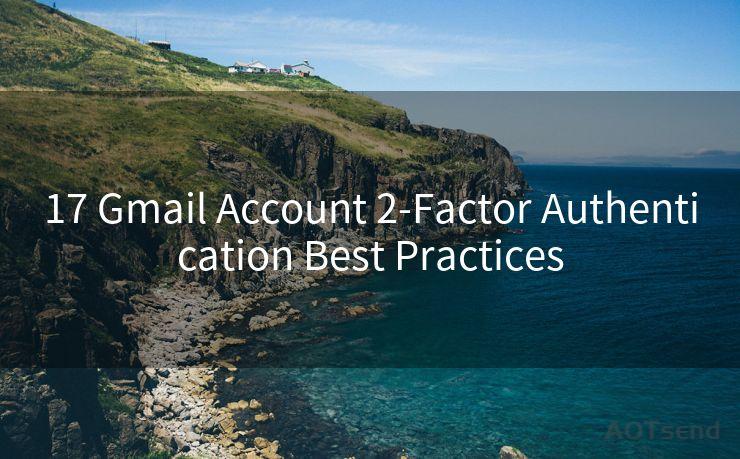17 Gmail Account 2-Factor Authentication Best Practices




1. Introduction
In today's digital age, protecting your online accounts, especially your Gmail, is crucial. Two-factor authentication (2FA) adds an extra layer of security to your Gmail account, making it harder for unauthorized access. Here are 17 best practices for setting up and using 2-factor authentication for your Gmail account.
2. Understanding 2-Factor Authentication
Two-factor authentication combines two different verification methods: something you know (like a password) and something you have (like a phone or a security key). Gmail's 2FA typically involves a code sent to your phone or a prompt in a dedicated authentication app.
3. Enabling 2-Factor Authentication
To enable 2FA on Gmail, navigate to your Google Account settings, find the "Signing in to Google" section, and select 2-Step Verification. Follow the prompts to set it up.
4. Backup Codes
When enabling 2FA, make sure to save the backup codes provided. These codes can be used in case you lose access to your primary verification method.
5. Choosing the Right Second Factor
You have options for the second factor: SMS, voice call, or authenticator app. The authenticator app is generally more secure than SMS or voice calls, as they can be intercepted.
6. Keeping Your Devices Secure
If you use a smartphone as your second factor, ensure it's locked with a PIN or biometric authentication. A lost or stolen unlocked phone could compromise your Gmail account.
7. Regularly Updating Your Password
Even with 2FA enabled, it's essential to regularly update your Gmail password. A strong, unique password reduces the risk of brute-force attacks.
8. Avoiding Phishing Scams
Be vigilant against phishing emails that try to trick you into revealing your 2FA codes or disabling 2FA. Gmail will never ask you to provide your 2FA codes via email.

9. Using a Password Manager
Consider using a password manager to securely store your backup codes and other sensitive information. This ensures you won't lose access to your account if you misplace your backup codes.
10. Monitoring Account Activity
Regularly check your Gmail account activity to spot any unusual logins. Google provides tools to review recent account activity and manage your account's security settings.
11. Educating Yourself About Security Threats
Stay informed about the latest security threats and best practices. Google's support pages and security blog are great resources.
12. Physical Security Keys
For even stronger security, consider using a physical security key as your second factor. These keys provide an additional layer of protection against phishing attacks.
13. Avoiding Public Computers
🔔🔔🔔
【AOTsend Email API】:AOTsend is a Managed Email Service for sending transactional emails. Support Email Types: reminders, authentication, confirmations, notifications, verification codes, invoices, password resets, account activations, billing statements, two-factor authentication (2FA), and one-time passwords (OTP) emails, etc. $0.28 per 1000 Emails. 99% Delivery, 98% Inbox Rate.
You might be interested in:
Why did we start the AOTsend project, Brand Story?
What is a Managed Email API, How it Works?
Best 25+ Email Marketing Platforms (Authority,Keywords&Traffic Comparison)
Best 24+ Email Marketing Service (Price, Pros&Cons Comparison)
Email APIs vs SMTP: How they Works, Any Difference?
Try to avoid accessing your Gmail account on public computers, as they may be infected with malware that can steal your login credentials.
14. Logging Out
Always remember to log out of your Gmail account when using a shared or public computer.
15. Keeping Your Recovery Information Updated
Ensure that your recovery email and phone number are always up to date. This will help you regain access to your account if you lose your 2FA device.
16. Being Cautious With Third-Party Apps
When authorizing third-party apps to access your Gmail, make sure they come from trusted sources. Malicious apps can pose a security risk.
17. Staying Vigilant
In conclusion, the most important best practice is to stay vigilant. Regularly review your account settings, update your passwords, and be careful when authorizing third-party apps. By following these best practices, you can ensure that your Gmail account remains secure, even in the face of evolving security threats.




Scan the QR code to access on your mobile device.
Copyright notice: This article is published by AotSend. Reproduction requires attribution.
Article Link:https://www.mailwot.com/p1995.html



